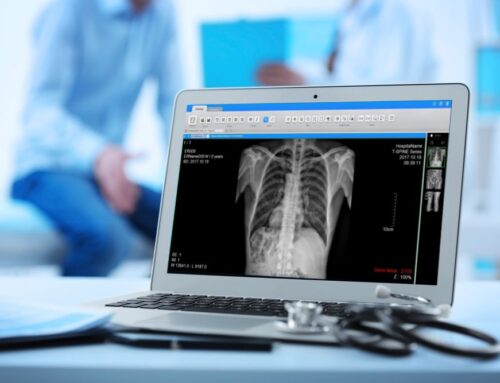Not a familiar concept to most, nuclear medicine is a very useful tool which assists in diagnosis on a more detailed level of scan. Today, we take an inside look at what nuclear medicine is and how it can help our patients.
On the Molecular Level
What is incredible about nuclear medicine, is it helps radiologists access a patient’s body on the molecular level. Within the realm of molecular imaging, nuclear medicine utilises radiopharmaceuticals (very tiny amounts of radioisotope) in diagnosis and treatment. Working with special scanning technology, these radiopharmaceuticals can be observed within the patient’s body and create the needed images, on a remarkable level. More common diagnostic tools, such as XRAY, CT scan, and MRI can produce advanced and high quality images of the physical structure of specific areas of the body. Yet nothing provides the detail that nuclear medicine can attain.
How Does the Process Work?
The procedures for nuclear medicine vary greatly. On a basic level, if you’re undergoing nuclear medicine, you will be administered a small quantity of radioisotope, typically through injection. During the procedure, a gamma camera will be placed around the key areas of your body being examined, producing the necessary images. Your radiologist will discuss the specifics of each procedure in greater detail if your situation requires nuclear medicine.
What Does Nuclear Medicine Do?
Nuclear medicine has many uses in the medical world. This type of scan can provide radiologists and physical with greater insight into your condition and your health. Nuclear medicine is effective in diagnosing a variety of illnesses and problems, including bone disorders, heart disease, and brain disorders, among others. In particular, nuclear medicine is important in identifying certain diseases in theur earliest stages. Assisting with a cancer diagnosis, nuclear medicine can determine the exact location of a tumor, sometimes even prior to the appearance of symptoms. It is one of the methods which can help with earliest possible detection. Often, nuclear medicine can be utilised as a form of treatment with cancer, kidney disorders, and brain diseases, as well as other illnesses.
Some Benefits
Unlike biopsy or similar invasive methods, nuclear medicine has the benefit of being a completely non-invasive procedure. It produces the same results, if not better in certain circumstances, and its ability for early detection of some diseases makes it an excellent tool for patients.
Is it Safe?
Many patients express concern over the potential risks involved with undergoing nuclear medicine. The procedures of nuclear medicine do involve some ionising radiation, similar to other scanning technology, such as general XRAY. As radiation exposure is cumulative there is always some inherent risk involved. However, the amount administered in nuclear medicine or an XRAY is neglible and is not dissimilar from amounts of radiation you are likely to be exposed to naturally.
What are nuclear medicines used for?
Nuclear medicine procedures are used in diagnosing and treating certain illnesses. These procedures use radioactive materials called radiopharmaceuticals. Examples of diseases treated with nuclear medicine procedures are hyperthyroidism, thyroid cancer, lymphomas, and bone pain from some types of cancer.
Is nuclear medicine the same as radiology?
What is the difference between nuclear medicine vs radiology? The primary difference between nuclear medicine and radiology is that nuclear medicine creates images using internal radiation waves from inside the body while radiology develops images through apply external energy waves to the body.

